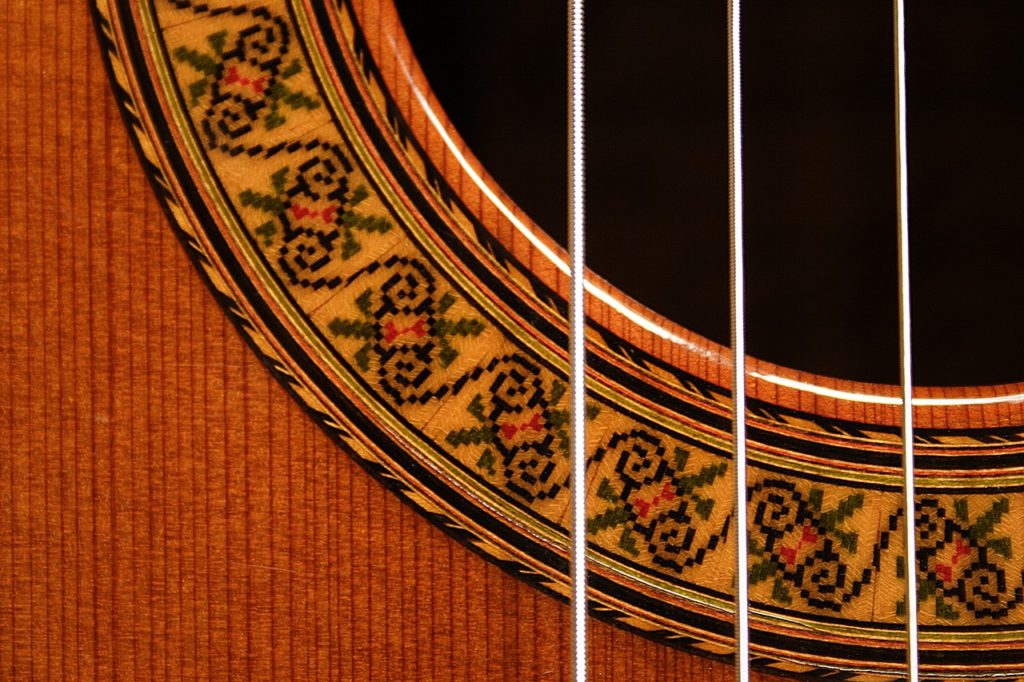The main source for How to Play and Tune Parlor Guitar Style is an old, anonymous guitar method book.
Published in 1851, Guitar Without a Master, gives this advice on tuning the strings, “The best way is to tune them openly, by ear, like those of a violin” (13).
- The music example that goes with this statement shows the guitar strings being tuned in standard tuning.
- The notes from lowest sounding string to highest sounding string goes: EADGBE.
- When violin players tune, they play two neighboring strings at the same time, tuning to an interval of a fifth. Beat-less fifths typify well-tuned violin strings.
Tune the guitar’s open strings to standard tuning, following the advice given above.
- If you find this too hard, you can use the above tab to tune using harmonics.
- Alternately, you could tune using a strobe tuner.
- The video under the tab shows you how to tune using harmonics.
- The video tunes strings 4 – 6 the same way as the tab. However, it tunes strings 1 – 2 differently.
- This will impact how the chords sound, so when tuning with harmonics, use the tab version where it differs from the video.
In theory, if we started our tuning with the open E string, it would look like this:
E1: 378 cents
B2: 1080 cents
G3: 694 cents
D4: 196 cents
A5: 898 cents
E6: 400 cents
One cent = 1/100th of semitone. In other words, each half-step (the span of one fret to the next) gets broken into 100 parts. Cents get used a lot to describe instrument tunings.


